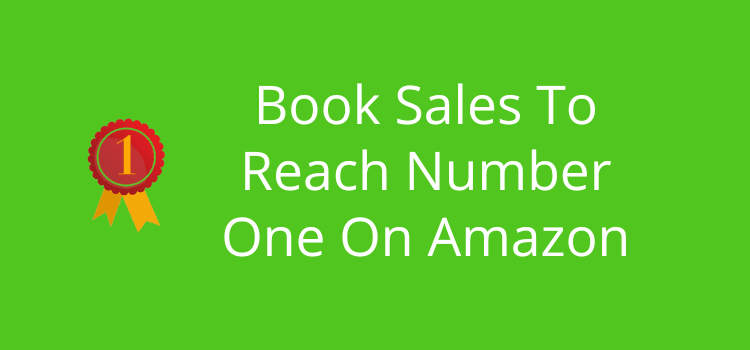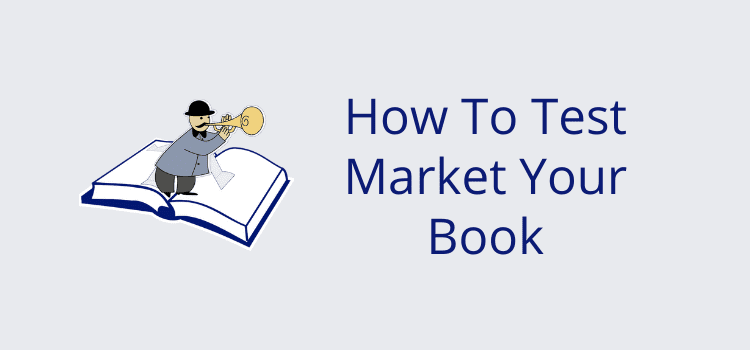
How many book sales do you need to reach number one on Amazon?
If you want to hit the bestseller lists for the major popular genres in the Kindle Store, you will need somewhere between 2,000 and 6,000 book sales per day.
However, Amazon has more than one bestseller list—there are hundreds if you know where to look.
It means that you have a lot of opportunities for your book to rank high on the charts, even number one.
Amazon categories (really) count
When you self-publish a book, you are competing with the big guys.
Amazon doesn’t differentiate between major publishers and self-publishers.
So you are up against all the big-name authors you can think of when you publish your book.
That’s why trying to rank high in the primary genres, such as Romance, Science Fiction, or Horror, is futile.
You need to position your book in much less competitive genres. Or, as Amazon calls them, categories.
If you choose the right niche categories for your book, you stand a much better chance of ranking in the top ten in your selected categories.
Yes, you can have a top-ten bestseller on your hands! But only if you select wisely.
Selecting your categories and seven KDP search keywords is a vital part of publishing your book.
If you rush this step without doing your research, you will miss the best opportunity you have to get your book ranking on Amazon.
But if you do the work, it’s possible to rank in the top ten for many niche categories.
Where to find niche categories on Amazon
The sidebar on Amazon is full of genres and sub-genres (which Amazon calls Browse Categories) you can choose.
All you need to do is select from the possibilities. If your genre is romance, there are so many different categories you can rank for in Amazon browse categories.
First, choose a top-level theme.

Then scroll down a little further, and you’ll find many more options to select.

When you narrow down your selection to these niches, you will see the top books and bestsellers in each sub-genre.
There are so many options for you to choose to view different bestseller lists.
Another way is to check top-ranking books and click on one of their ranking categories.

Here’s an example of the bestseller list in Small Town & Rural Fiction.

You’ve probably never heard of this genre. But here we are with books ranking for it.
So, it’s easy to find these niche sub-genres. But the big question is, how many book sales do you need to reach number one or even number ten?
Daily book sales on Amazon Kindle to reach #1 and #10
Amazon doesn’t show daily sales numbers for individual categories, so the only way I know how to find the data is to use Publisher Rocket.
It’s specialized software that accesses the Amazon database for all the data you need to help you improve the ranking potential of your book.
No, it’s not free. But it’s worth every cent for the data it can uncover to help you position your book in the best categories.
It’s also one of the best tools for discovering profitable Amazon keywords.
With data from Publisher Rocket, I created the following graphs to show you how bestseller rankings work based on daily sales.
Let’s start with the very popular top-level categories.
Daily sales for primary categories to reach #1 to #10
Unless you are Dan Brown, Stephen King, or J K Rowling, you should never list your book in the broad main categories.
It’s one of the reasons that so many self-published books fail to sell on Amazon.
Here’s why.
The two graphs below show you the number of Kindle ebooks you need to sell daily to rank from #1 to #10.
I graphed the data for Romance, Science Fiction & Fantasy, Literature & Fiction, Mystery Thriller & Suspense, Teens & Young Adults, and Children’s eBooks.
Yes, you need to sell 1,000s of copies every day to rank.


Daily sales for niche categories to reach #1 to #10
But if you dive down a little further into these main categories, you can find sub-categories that are much less competitive.
It means that you don’t need to sell as many copies to rank.
I used the same main categories in the two graphs below but now selected a popular sub-category.


As you can see from the graphs, it’s much easier to rank for sub-categories.
Instead of needing to sell 1,000s of copies, you only need 100s, and in many cases, far fewer.
What about nonfiction categories?
Okay, so let’s look at two popular nonfiction categories – Biography & Memoirs and Self-Help.

Biographies & Memoirs is a terrific example of why narrowing down your category really works.
The more defined your category, the fewer copies you need to sell to get your book to rank.

Self-help is an extremely competitive category. But it has one odd twist.
When you choose a sub-category, you can rank for a lower top 10 result much easier than in other genres.
Book sales to reach number one in micro-niche categories
Let’s take it one step further and look at even more specific micro-categories.

Can you rank number one by selling 1, 2, or 3 copies a day?
Yes, as long as you dig deep and hunt for a non-competitive category that works for your book.
I expect a rush of Kindle ebooks about Tibetan history now.
Okay, but does it work?
You’re right to ask. It’s so easy to say, do as I say.
But, it’s much harder to say, do as I do.
However, I kept a couple of screenshots. So yes, I can say do as I do, and here’s the proof.

Yes, that’s my book at number four for wartime espionage.

And here’s one of my books at number 6 for Romance Literary Fiction.
Okay, it’s been a few years since I released my last book, but nothing has changed in getting your book to rank.
Select the best three niche categories, choose your seven search keywords (very) carefully, and promote your book as much as you can.
Summary
You might be surprised how few book sales you need to reach number one on Amazon in specific categories.
But only if you avoid the mistake many new authors make of choosing top-level browse categories.
Researching the best categories for your book takes time, and it can pay dividends.
But there’s no magic bullet that makes a book sell.
To stand any chance of success, you need to write a terrific book, have a terrific eye-catching book cover, and promote your book as much as you can.
Related reading: How To Add More Amazon Categories To A Book
Share This Article


